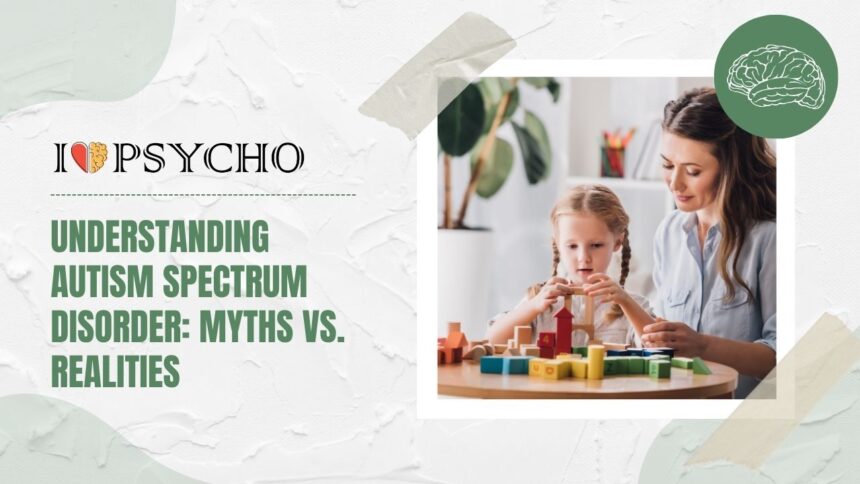Welcome to a journey of understanding and acceptance! Today, we explore the intricate world of Autism Spectrum Disorder (ASD) – a topic often shrouded in myths and misconceptions. As we delve into the realities of living with ASD, uncover early signs, discuss treatment options, and champion for inclusion, let’s challenge ourselves to break down barriers and foster a more compassionate society. Join us as we debunk stereotypes and embrace diversity in all its beautiful forms.
What is Autism Spectrum Disorder (ASD)?
Autism Spectrum Disorder (ASD) is a complex neurodevelopmental condition that affects individuals in various ways. It is not a one-size-fits-all diagnosis, as the spectrum encompasses a wide range of strengths and challenges. People with ASD may experience difficulties with social interactions, communication, sensory processing, and repetitive behaviors. However, it’s important to remember that each person with ASD is unique and has their own set of abilities and talents.
Individuals with ASD may have special interests or skills that they excel in, showcasing the diverse nature of this disorder. While some individuals may require substantial support in their daily lives, others may lead independent lives with minimal assistance. Understanding and accepting these differences are crucial in creating an inclusive environment for people with ASD to thrive and reach their full potential.
By shedding light on what Autism Spectrum Disorder truly entails, we can foster empathy and promote acceptance within our communities.
Myths and Misconceptions about ASD
Autism Spectrum Disorder (ASD) is often misunderstood due to various myths and misconceptions surrounding it. One common myth is that all individuals with ASD have savant abilities or exceptional talents in a specific area. While some may indeed possess extraordinary skills, it’s essential to recognize that ASD affects each person differently.
Another misconception is that people with ASD lack empathy or emotions. In reality, individuals with ASD can experience a wide range of feelings but may struggle to express them in ways that neurotypical individuals do. It’s crucial to understand and acknowledge their unique way of processing emotions.
There is also a misconception that vaccines cause autism, which has been debunked by numerous scientific studies. Blaming vaccines for causing ASD only perpetuates fear and misinformation instead of focusing on evidence-based research and support for individuals with autism.
By dispelling these myths and misconceptions, we can create a more inclusive and understanding society for those living with Autism Spectrum Disorder.
The Reality of Living with ASD
Living with Autism Spectrum Disorder (ASD) is a unique experience for each individual. It’s important to understand that ASD is not a one-size-fits-all condition. People with ASD may face challenges in communication, social interactions, and sensory processing. These challenges can impact daily life in various ways.
Individuals with ASD often have strengths and abilities that are overlooked. They may excel in areas such as attention to detail, creativity, and problem-solving skills. However, navigating the world with ASD can also come with its share of difficulties.
From struggling to understand social cues to facing sensory overload in noisy environments, individuals with ASD may find certain situations overwhelming. This can lead to feelings of anxiety or frustration.
Despite these challenges, it’s essential to recognize the resilience and uniqueness of individuals on the autism spectrum. By fostering understanding and creating inclusive environments, we can better support people living with ASD in reaching their full potential.
Early Signs and Diagnosis of ASD
Understanding the early signs and diagnosis of Autism Spectrum Disorder (ASD) is crucial for timely intervention and support. It’s important to recognize that ASD presents differently in each individual, making it essential to be aware of a variety of potential indicators.
In infants, lack of eye contact or smiling by six months, delayed babbling or gestures by 12 months, and absence of single words by 16 months can be red flags. Toddlers may exhibit repetitive behaviors or fixations on specific objects, as well as difficulty with social interactions.
Diagnosis involves comprehensive evaluations by healthcare professionals who specialize in developmental disorders. These assessments may include observing behavior patterns, communication skills, and social interactions over time.
Early detection allows for early intervention strategies tailored to the individual’s unique needs. Being proactive in seeking help if you suspect your child may have ASD can make a significant difference in their development journey. Stay informed and trust your instincts when it comes to recognizing potential signs early on.
Treatment and Support for Individuals with ASD
Navigating the world with Autism Spectrum Disorder (ASD) can present unique challenges for individuals, but there are various treatment and support options available to help them thrive. Early intervention is key in providing effective strategies tailored to each person’s needs. This can include behavioral therapies, speech therapy, occupational therapy, and social skills training.
Medication may also be prescribed to manage certain symptoms or co-occurring conditions such as anxiety or ADHD. It’s essential for caregivers and healthcare providers to work together to create a comprehensive support plan that addresses all aspects of an individual’s well-being.
In addition to professional interventions, building a strong support network is crucial for individuals with ASD. This could involve family members, teachers, therapists, and community resources collaborating to provide ongoing assistance and encouragement.
By utilizing a holistic approach that combines therapeutic interventions with understanding and acceptance from those around them, individuals with ASD can lead fulfilling lives filled with opportunities for growth and development.
The Importance of Acceptance and Inclusion
Embracing acceptance and promoting inclusion for individuals with Autism Spectrum Disorder (ASD) is crucial in fostering a supportive and understanding environment. It’s about recognizing their unique strengths, talents, and perspectives rather than focusing solely on their challenges. By embracing neurodiversity, we celebrate the differences that make each person special.
Creating spaces where individuals with ASD feel accepted and valued not only benefits them but enriches our communities as a whole. When everyone feels included, it opens up opportunities for learning from one another and building meaningful connections. Inclusion goes beyond physical accessibility; it encompasses emotional support, empathy, and genuine respect for each individual’s journey.
By championing acceptance and inclusion, we pave the way towards a more compassionate society where diversity is celebrated rather than stigmatized or misunderstood. Let’s work together to create a world where everyone feels seen, heard, and appreciated for who they are – regardless of their neurodevelopmental differences.
How to Create an Inclusive Environment for People with ASD
Creating an inclusive environment for individuals with Autism Spectrum Disorder (ASD) is crucial in promoting acceptance and understanding within our communities. One way to foster inclusivity is by educating others about ASD and raising awareness about the diverse needs of individuals on the spectrum.
It’s important to provide accommodations and support that cater to the unique sensory sensitivities and communication styles of people with ASD. This can involve using visual schedules, providing quiet spaces, or offering alternative forms of communication such as sign language or picture cards.
Encouraging social interactions and fostering friendships between neurotypical individuals and those with ASD can help break down barriers and promote a sense of belonging for everyone involved. Embracing neurodiversity not only enriches our communities but also promotes empathy, compassion, and acceptance among all members.
By creating an inclusive environment that celebrates differences rather than stigmatizes them, we pave the way for a more compassionate society where every individual feels valued, respected, and understood.
Conclusion: Educating Ourselves and Breaking the Stigma Surrounding Autism
Autism Spectrum Disorder (ASD) is a complex neurological condition that affects individuals in unique ways. By understanding the myths and realities of living with ASD, we can create a more inclusive society where acceptance and support are the norm. Early diagnosis and intervention play a crucial role in improving outcomes for individuals with ASD.
By educating ourselves about autism and breaking the stigma surrounding it, we can promote a more empathetic and understanding environment for those on the spectrum. It’s essential to recognize that every individual with ASD has their own strengths, challenges, and experiences. Let’s embrace diversity and celebrate the uniqueness of each person, regardless of whether they are neurotypical or on the autism spectrum.
Together, we can work towards creating a world where everyone feels accepted, valued, and supported – regardless of their differences. Let’s continue to learn, grow, and advocate for inclusivity so that individuals with ASD can thrive in all aspects of life. Thank you for joining us on this journey of awareness and acceptance.









